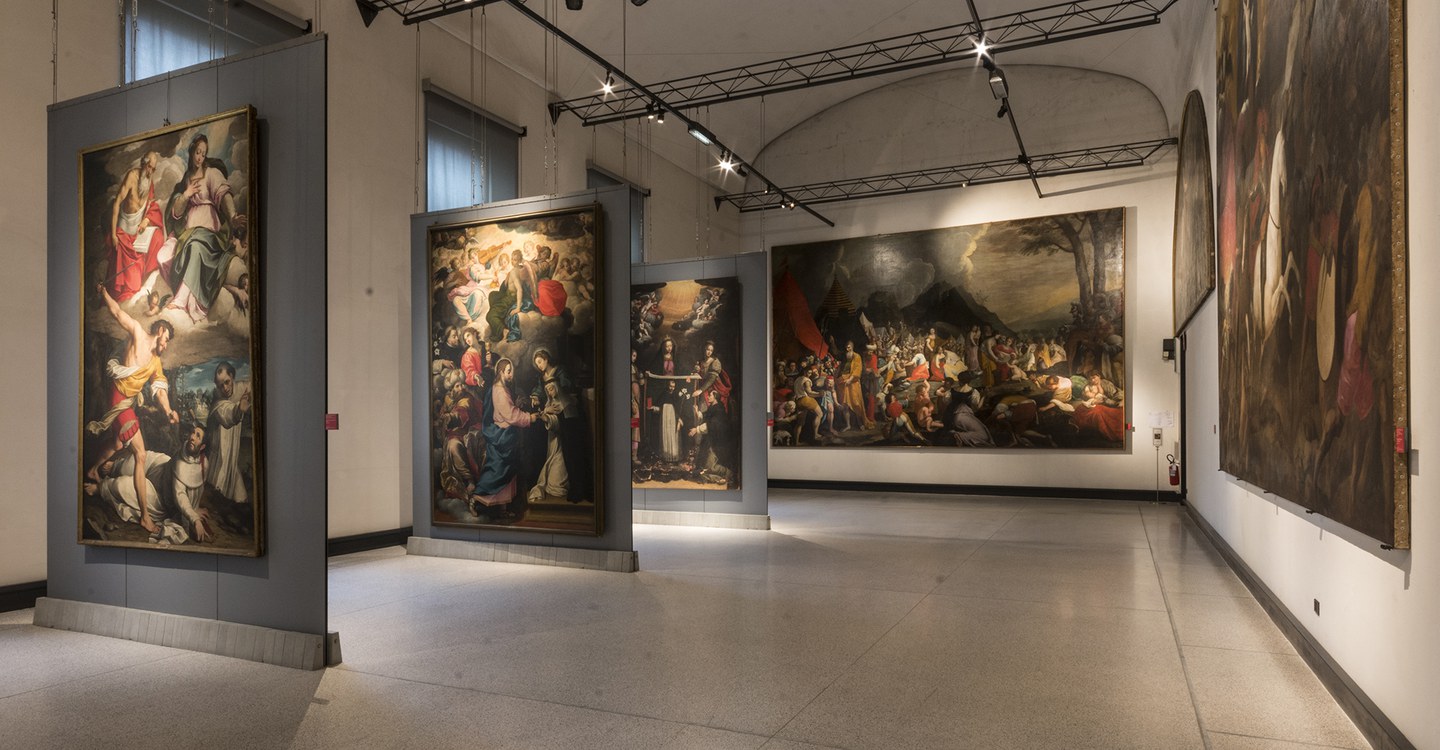
The last decade of the 16th Century represents a turning-point for the entire layout of St. Domenico Church, a basilica which was located where there are at the moment the Public Gardens and which, for several centuries, has represented an important artistic and cultural center.
The majority of the altars received new altarpieces with wooden, carved and golden beautiful frames, which substituted the ancient fresco and paintings. The leader of the painters who contributed to this renewal was Giovanni Battista Trotti called Il Malosso (1556-1619), an apprentice of Bernardino Campi. Four out of the eight pictures he painted for the Church San Domenico arrived to the Museum and are on display in this room.
Also Andrea Mainardi, called Chiaveghino (1550-1597), another apprentice of Bernardino Campi and Cristoforo Agosta da Casalmaggiore (1570-1597) and probably the most skilled among to apprentices of Trotti, participated to the restoration of St Domenico.
In the Church, the Holy Rosary Chapel, was one of the main Virgin Mary worship centers in the town, and it included some of the most important artworks made in Cremona from the end of the 16th Century and the second half of the following century.
In this room are included some other paintings of the 17th Century coming from San Domenco and, in particular, the painting s by Giuseppe Nuvolone, the son of Panfilo: Beato Moneta and Beato Rolando; these artworks demonstrate efficiently the baroque development of the painting school in Lombardy in the second half of the century.
